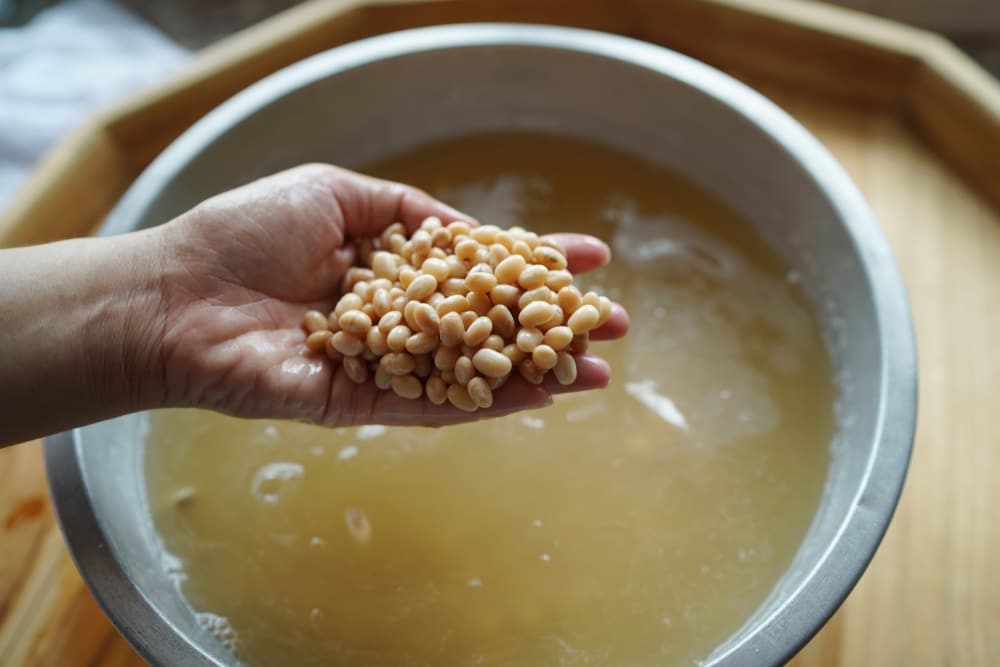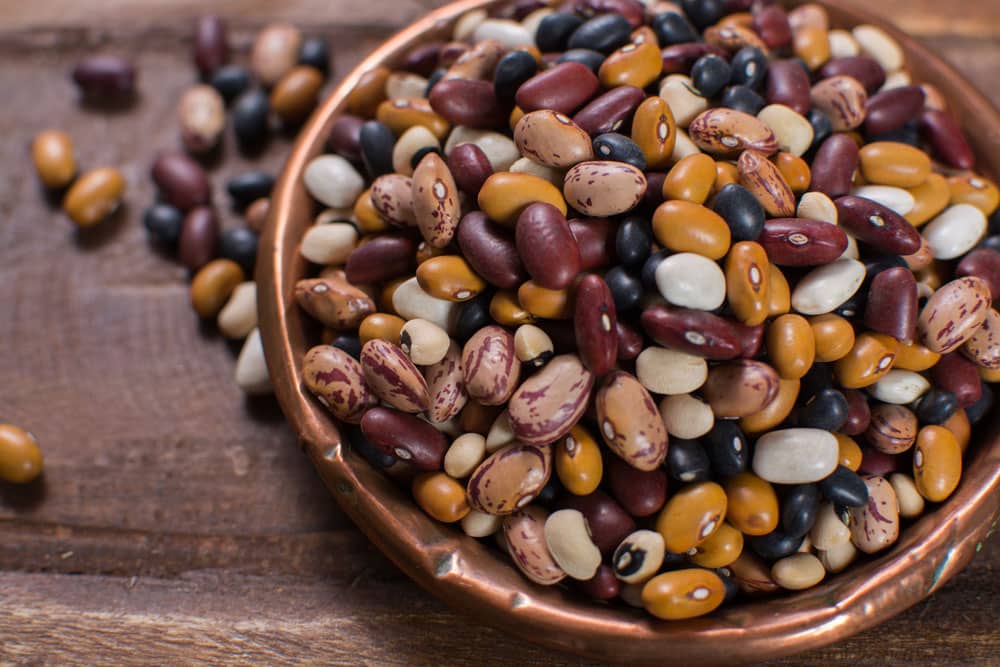
Many of us use dried beans of various kinds as a staple in our kitchens. They are heart-healthy and make a great addition to most meat dishes. They are easy to cook and provide a much-needed protein boost to vegan and vegetarian dishes.
While technically you can cook beans without pre-soaking them, you can expect your dish to take 2-3 hours longer to cook if you don’t! Why do we soak beans prior to cooking?
As they soak, the beans rehydrate, thereby softening. This helps them to cook faster and makes them more easily digestible.
If you add some salt to the soaking water, it will help break down their tough skins, helping them to cook even quicker.
Soaking is simple and while it requires some time, it needs very little effort on your part. Simply put the beans you intend to cook the following day into a bowl and cover them with at least two inches of water. Hot or cold, it doesn’t matter.
Add a couple of tablespoons of salt. Leave them to soak for at least four hours and up to twelve. Any longer than that and they will start to sprout!Drain and rinse the beans in cold, clean water before cooking them.
You might notice that the beans develop some foam on the water while they are soaking or cooking. Canned beans sometimes appear foamy too. What is the reason for this and are they still safe to eat? Keep reading and we will tell you.
Why Do Beans Foam When Soaking?
The Three Main Reasons for Foam on Beans
- Starch: Beans contain starch and when soaked or cooked, some of it escapes and makes the water cloudy or foamy. This is not harmful.
- Protein: Chickpeas and white beans in particular release proteins when soaked or cooked that can cause the water to foam. So much so that the water from canned chickpeas is called “aquafaba” and can be whipped like egg whites.
- Saponins: The first part of the word “sapo” comes from the Latin word meaning “soap”. Saponins are natural plant compounds that are found in many plant foods, including beans. They make a foamy lather when they get into the water while soaking or cooking. They are safe to consume and may even have cholesterol-lowering and anti-inflammatory effects.
Beans contain a lot of starch, proteins, and saponins. Plus, there are many impurities and much dirt found on dried beans. Once you soak the beans, the starch and impurities rise to the surface and it might appear as foam to you.
This is normal and you don’t have to worry much about it as long as you rinse the beans in clean water before boiling them if the aesthetics of it bothers you.
Is It Safe?
This starchy foam may not look appetizing but it is certainly not harmful. It does not mean that there is anything wrong with the beans. However, since it is not the most appetizing sight, you need to know how to get rid of the foam.
Learning How to Avoid It If You Want To
The best way to avoid such foam and starch from gathering on top of your water while you are soaking beans is to ensure that you rinse the beans once or twice during the soaking process.
Simply stir them, then pour that cloudy, foamy water out and replace it with fresh, cold water. Add some salt if you like.
However, You Don’t Need to Avoid It!
There are no good health reasons to throw out the foam that forms on your soaking beans or when you cook them. It can be safely eaten and has very little taste.
However, it can spoil the look of your dish so throw it out and rinse the beans in clean water if you prefer.

